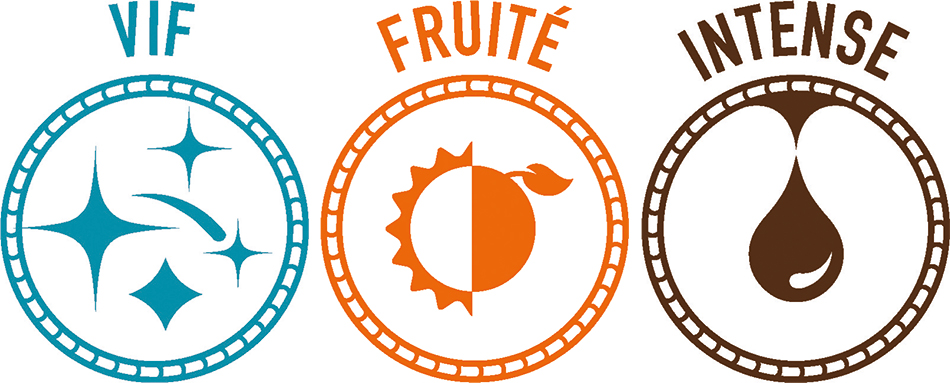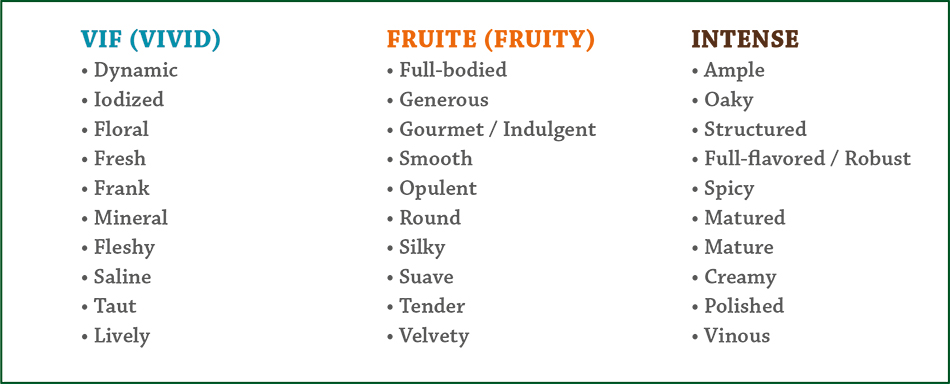
Champagne winegrowers offer a wide diversity of champagnes whose technical and sensory reading is not always easy for consumers or trade professionals. To guide them, the collective brand Champagne de Vignerons has developed a dedicated tool, the Caractères, based on identifying a dominant sensory impression perceived during tasting.
The chart highlights three Caractères—VIF, FRUITÉ, INTENSE (VIVID, FRUITY, INTENSE)—each associated with a list of descriptive adjectives that help refine the sensory perception of a champagne. For instance: VIF, iodized and saline / FRUITE, gourmand and velvety / INTENSE, oaky and creamy. This sensory information facilitates the choice, purchase, or recommendation of a cuvée within the range offered by a grower or a prescriber.

The Caractères are determined at the end of the champagne’s production process, without diminishing in any way the recognition of the grower’s technical expertise. On the contrary, they project the promise of pleasure to come and reinforce the emotional bond already woven between consumer and champagne, opening the door to a more technical discourse. Providing highly evocative technical details upfront can sometimes prove counterproductive, especially when these do not necessarily translate into the sensory experience.
For example, a champagne vinified in oak may be defined as VIF rather than INTENSE if the oak character is not perceptible. The same applies to elements such as dosage, vintage, malolactic fermentation, or even grape variety. The sensory profile of a champagne cannot, of course, be reduced to a single aspect of its production.
Whether you are a grower or a trade professional, this method offers an effective and engaging way to identify the Caractère and the two associated adjectives for each cuvée in your range. Ideally, taste blind, then select the adjectives in the columns that best match your impressions. The column where you have marked the most adjectives reveals the dominant Caractère of the cuvée. If you are hesitating between two columns, the trick is to think of a dish that embodies VIF (fish carpaccio), FRUITE (roast poultry), or INTENSE (meat with mushrooms), and to consider which pairing feels the most natural with the champagne in question. This will guide you to the dominant Caractère of the cuvée.
Geoffrey Orban,
Champagne expert, for the collective brand Champagne de Vignerons.